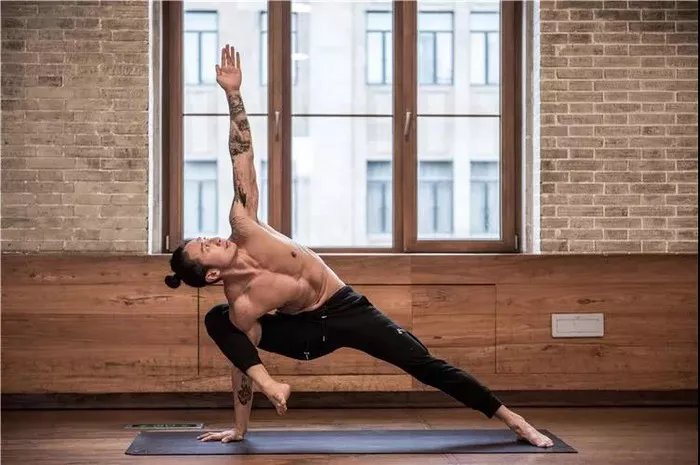Kriya Yoga is an ancient spiritual practice that integrates breath control (pranayama), meditation, and physical postures (asanas) to harmonize the body, mind, and soul. This system was revived and popularized by Paramahansa Yogananda, who introduced it to the West in his book Autobiography of a Yogi. While Kriya Yoga primarily focuses on inner energy transformation and meditation, asanas play a crucial role in preparing the body for deep spiritual practice by enhancing flexibility, balance, and mental clarity.
In this guide, we will explore six fundamental asanas in Kriya Yoga that are ideal for beginners. These postures will help purify the body, balance energy flow, and cultivate inner awareness.
1. Padmasana (Lotus Pose)
Padmasana, or Lotus Pose, is a classic meditative posture that supports deep breathing and prolonged meditation. It helps calm the mind, improves concentration, and enhances the flow of prana (life force energy) within the body.
How to Perform Padmasana:
- Sit on the floor with your legs extended forward.
- Bend your right knee and place the right foot on your left thigh.
- Bend your left knee and place the left foot on your right thigh.
- Keep your spine erect and hands resting on your knees in a mudra position (such as Chin Mudra).
- Close your eyes and focus on your breath.
Benefits of Padmasana:
- Enhances concentration and mental clarity.
- Promotes spinal alignment and flexibility.
- Stimulates digestion and blood circulation.
- Helps open the hips and relieve lower back tension.
2. Vajrasana (Thunderbolt Pose)
Vajrasana is a simple yet powerful sitting posture that aids digestion and strengthens the lower body. It is often used as a preparatory pose for meditation and pranayama.
How to Perform Vajrasana:
- Kneel on the floor with your knees together and feet pointing backward.
- Sit back on your heels, ensuring your spine remains straight.
- Place your hands on your thighs with palms facing down.
- Close your eyes and take deep, steady breaths.
Benefits of Vajrasana:
- Aids digestion and relieves acidity.
- Strengthens the knees, ankles, and thighs.
- Encourages proper spinal posture.
- Calms the mind and enhances focus.
3. Bhujangasana (Cobra Pose)
Bhujangasana is an energizing backbend that strengthens the spine and stimulates the heart chakra, promoting vitality and confidence.
How to Perform Bhujangasana:
- Lie on your stomach with your legs extended and feet hip-width apart.
- Place your palms on the floor beside your shoulders.
- Inhale and lift your chest while keeping your elbows slightly bent.
- Engage your back muscles and hold the posture for a few breaths.
- Exhale and slowly lower your chest back to the floor.
Benefits of Bhujangasana:
- Strengthens the spine and improves flexibility.
- Opens the chest, lungs, and heart.
- Stimulates the digestive organs.
- Reduces stress and fatigue.
4. Paschimottanasana (Seated Forward Bend)
Paschimottanasana is a deep forward fold that stretches the entire back of the body and encourages introspection, making it an essential asana in Kriya Yoga.
How to Perform Paschimottanasana:
- Sit on the floor with your legs extended straight in front of you.
- Inhale and extend your arms upward.
- Exhale and slowly bend forward from the hips, reaching for your feet.
- Keep your spine long and avoid rounding your back.
- Hold the pose for several breaths, then return to a seated position.
Benefits of Paschimottanasana:
- Stretches the spine, hamstrings, and lower back.
- Stimulates the kidneys, liver, and digestive organs.
- Reduces anxiety and promotes inner calmness.
- Enhances flexibility and blood circulation.
5. Ardha Matsyendrasana (Half Spinal Twist)
This asana is a seated spinal twist that enhances flexibility and stimulates the digestive and nervous systems.
How to Perform Ardha Matsyendrasana:
- Sit with your legs extended straight.
- Bend your right knee and place your right foot outside your left thigh.
- Place your right hand behind you and your left elbow outside your right knee.
- Inhale, lengthen your spine, and exhale as you twist to the right.
- Hold the position for a few breaths, then repeat on the other side.
Benefits of Ardha Matsyendrasana:
- Enhances spinal flexibility and mobility.
- Stimulates digestion and detoxifies the internal organs.
- Improves posture and relieves back pain.
- Balances the energy channels in the body.
6. Savasana (Corpse Pose)
Savasana is the final relaxation posture that integrates the benefits of the entire yoga session. It allows the body and mind to absorb the effects of the practice and cultivates deep awareness.
How to Perform Savasana:
- Lie flat on your back with your arms relaxed at your sides, palms facing up.
- Close your eyes and take slow, deep breaths.
- Focus on releasing tension from every part of your body.
- Stay in this pose for at least 5-10 minutes.
Benefits of Savasana:
- Promotes deep relaxation and stress relief.
- Lowers blood pressure and heart rate.
- Enhances mindfulness and self-awareness.
- Helps integrate the physical and spiritual benefits of the practice.
Conclusion
Practicing these six Kriya Yoga asanas regularly will help prepare your body and mind for deeper spiritual practices. Each posture enhances energy flow, physical stability, and inner awareness, setting the foundation for meditation and breathwork. As you progress, you will notice improved flexibility, mental clarity, and a heightened sense of well-being.
If you are new to Kriya Yoga, approach these asanas with patience and consistency. Pair them with pranayama and meditation techniques for a holistic experience. Remember, yoga is not just about physical movement but a journey toward self-discovery and inner peace.
Related topics:






















